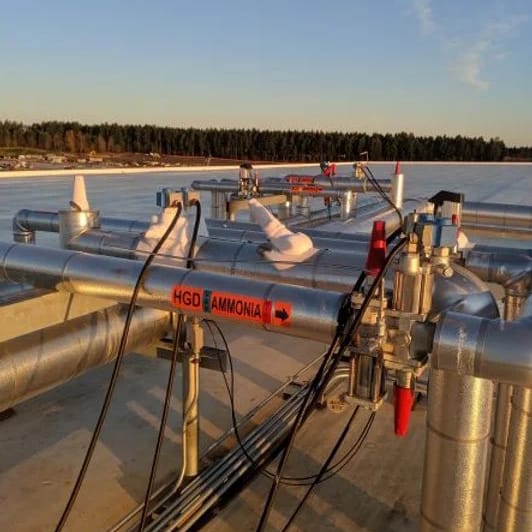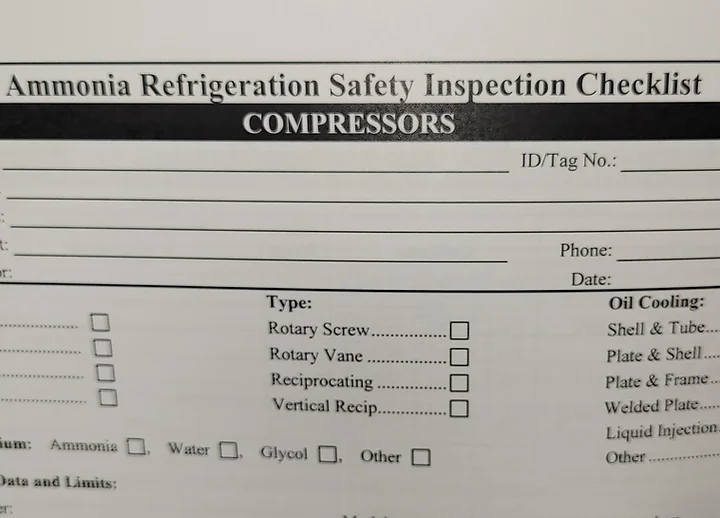Find out about the role of an ammonia safety data sheet. Learn how to read these data sheets and their benefits for safety.
Keyword(s): ammonia safety data sheet
Ammonia has the highest refrigerating capacity per pound of any refrigerant. It has better heat transfer than most chemical refrigerants, which reduces operating costs. It doesn’t have the same ozone-depleting effect as CFC refrigerants.
Ammonia has many advantages as a refrigerant. However, it can also be extremely dangerous. The ammonia safety data sheet is a critical part of your safety process.
Learn more about the ammonia safety data sheet. Find out how it can improve safety for your employees and your facility.
What Is a Safety Data Sheet?
The Occupational Safety and Health Administration (OSHA) requires safety data sheets. Safety data sheets apply to hazardous chemicals. The OSHA Hazard Communication Standard has the regulations.
Chemical manufacturers, distributors, or importers must provide a safety data sheet. The data sheet is for people who will be using the hazardous chemical.
Safety data sheets include information such as:
- Properties of the chemical
- Physical, health, and environmental hazards
- Protective measures
- Safety precautions for handling, storing, and transporting the chemical
Employers must make safety data sheets easily accessible to employees. Workers need access to safety data sheets for hazardous chemicals in their workplace.
A variety of formats are acceptable. A binder with copies of the information or digital copies on computers are examples.
OSHA requires the use of safety data sheets. Employers and workers can get information about the danger of chemical exposure. The process should reduce the number of illnesses and injuries from hazardous chemicals.
How to Read an Ammonia Safety Data Sheet
Safety data sheets have a standard format in 16 sections. The first eight sections contain general information. They describe the chemical, hazards, safe handling, and emergency control measures.
Sections 9 through 11 and 16 include other technical and scientific information.
Sections 12 through 15 are required for consistency with UN labeling requirements. OSHA doesn’t enforce these sections, though. They cover content that other agencies handle.
Sections 1-8
Section 1 identifies what the chemical is and its recommended uses. It also lists any restrictions on use. It gives the supplier’s contact information.
Section 2 identifies the hazards of ammonia and the appropriate warning information.
Section 3 identifies the ingredients. Anhydrous ammonia typically has ammonia as the only ingredient.
Section 4 describes first-aid measures in the event of exposure to ammonia.
Section 5 recommends how to fight a fire involving ammonia. Section 6 recommends how to handle accidental spills, leaks, or releases.
Section 7 explains how to safely handle and store ammonia. Section 8 indicates exposure limits for ammonia vapor. It lists controls and personal protective measures to prevent illness or injury.
Sections 9-11
Section 9 describes the physical and chemical properties of anhydrous ammonia.
Section 10 explains its reactivity and chemical stability. Section 11 includes toxicological information.
Sections 12-15
Section 12 provides information about the ecological impact of an ammonia leak.
Section 13 describes how to properly dispose of anhydrous ammonia. Section 14 gives classification information for shipping and transporting ammonia.
Section 15 identifies any other relevant safety, health, and environmental regulations.
Section 16
Section 16 indicates when the safety data sheet was prepared. It says when the last revisions occurred. This section may also include other information not already covered.
Safety Data Sheets and Ammonia Process Safety Management
Safety data sheets are one part of your ammonia process safety management. The requirements come from the OSHA Process Safety Management program. The Environmental Protection Agency (EPA) Risk Management Program also has requirements that you must follow.
The goal of process safety management is to prevent accidental releases of ammonia. OSHA and the EPA make routine inspections. They determine if facilities are in compliance with ammonia safety rules.
Who Does OSHA Process Safety Management Cover?
Ammonia process safety management is for facilities with 10,000 lbs or more of ammonia. 10,000 lbs of ammonia is around 2,000 gallons. The regulations apply to ammonia manufacturers and facilities with large ammonia refrigeration systems.
Even if you have less than 10,000 lbs of ammonia, the regulations are recommended practices. They can improve the safety of your facility.
What Does Ammonia Process Safety Management Include?
Ammonia process safety management has 14 components:
- Employee participation
- Process safety information
- Process hazard analysis
- Operating procedures
- Training
- Contractors
- Pre-startup safety review
- Mechanical integrity
- Hot work
- Management of change
- Incident investigation
- Emergency planning and response
- Compliance audits
- Trade secrets
Your safety data sheets play a role in several of these steps.
Using Safety Data Sheets for Process Safety Management
The ammonia safety data sheet helps create or update your process safety management. The following parts of the process use the ammonia safety data sheet the most.
Process Safety Information
Process safety information is information about your refrigeration process. You need this documentation before moving on to your process hazard analysis. Safety data sheets are an important part of documenting your refrigeration process.
Other useful documents include diagrams, design and construction standards, and electrical classification information.
Process Hazard Analysis
The safety data sheet informs your process hazard analysis. This step evaluates your ammonia refrigeration system. It determines if your current operations have any potential hazards.
Operating Procedures
This step provides written documentation for all modes of operation. It includes your safe work practices. They depend on a variety of information including the safety data sheet.
Emergency Planning and Response
This element includes a written emergency action plan and fire prevention steps. It describes an emergency response program. The safety data sheet tells you the best ways to respond to an emergency. It also tells you the most successful techniques for safely putting out a fire.
Safety in Your Ammonia Refrigeration System
Understanding the ammonia safety data sheet helps keep your employees and facilities safe. Developing your ammonia process safety management may seem a little overwhelming, though.
Ice Cold Consulting can help. We offer mechanical integrity audits and compliance audits. We’ll review your programs to make sure they’re up to the government’s standards.
Contact us today, and let’s get started.



